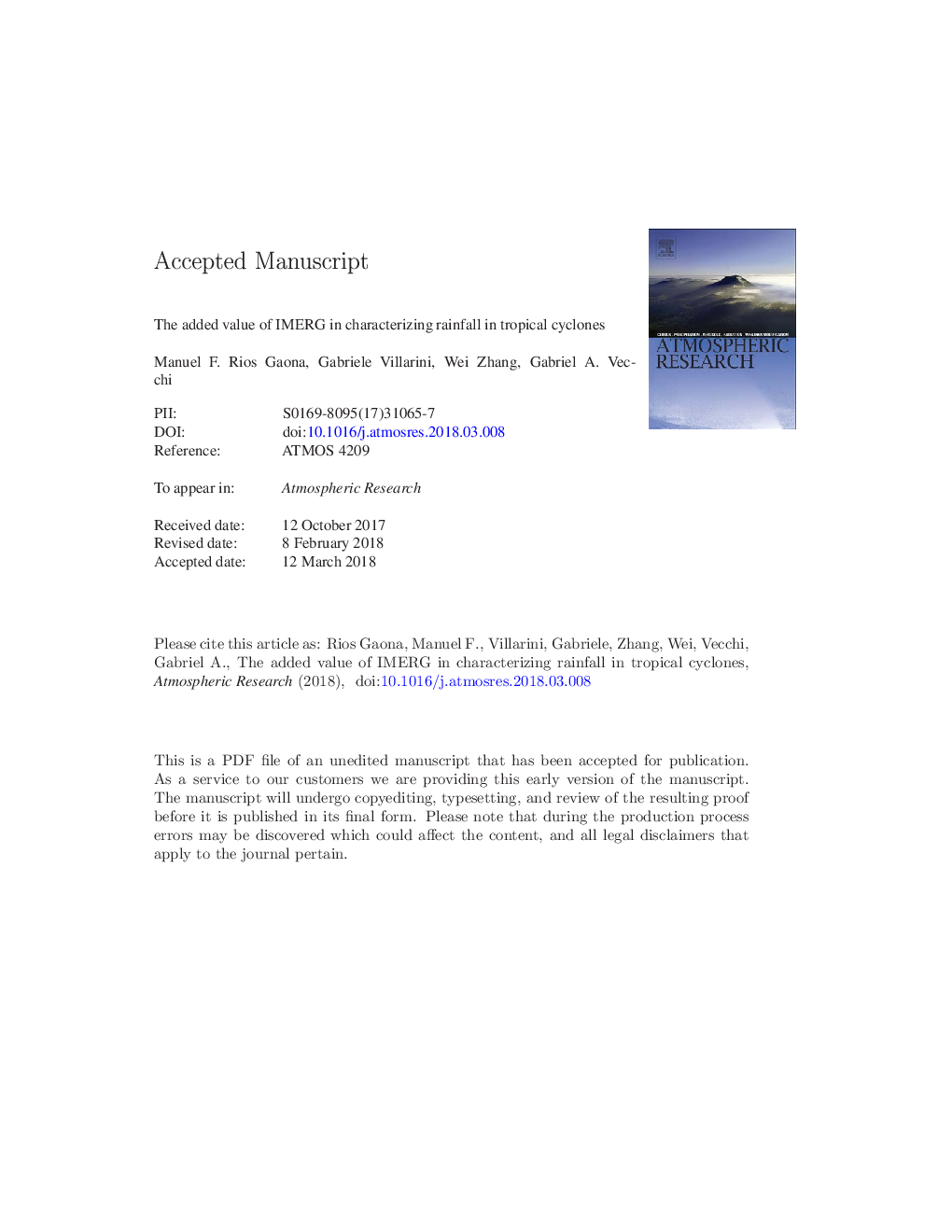| Article ID | Journal | Published Year | Pages | File Type |
|---|---|---|---|---|
| 8864594 | Atmospheric Research | 2018 | 26 Pages |
Abstract
We analyze here 166 TCs worldwide from March 2014 through March 2016. For every TC, we extract from IMERG V04 a 2000â¯km rainfall swath along the TC track. This allows us to characterize with great accuracy the spatial structure of TC-rainfall, from its development all the way to its landfall and dissipation. We stratify the analyses by basin of origin, intensity of the storm, and whether the TC was over ocean or land. We find that the South Pacific, West Pacific, and North Indian basins yield (median) rainfall intensities between 6 and 7.5â¯mmâ
hâ1 at radii â¼50â¯km. These intensities are for TCs over ocean, and in most cases they are twice (or more) as high as the median intensities for TCs over land (â¼3.0â¯mmâ
hâ1). For the North Atlantic, South Indian, and East Pacific basins the oceanic (median) rainfall intensities are between 4 and 5â¯mmâ
hâ1. Upscaled IMERG estimates (0.25°Ã0.25° every 3â¯h) do not capture the rainfall structure within the eyewall (i.e., for radii < 50â¯km), especially for the South Pacific, West Pacific, and North Indian basins.
Keywords
Related Topics
Physical Sciences and Engineering
Earth and Planetary Sciences
Atmospheric Science
Authors
Manuel F. Rios Gaona, Gabriele Villarini, Wei Zhang, Gabriel A. Vecchi,
